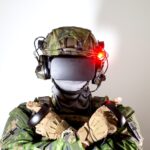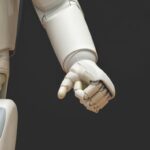Engaging Introduction
When you hear the term “computer vision,” what comes to mind? For many, it may seem like a concept out of a science fiction movie. However, it’s not only a reality today but also an influential part of our daily lives. Computer vision, a field that falls under the broader umbrella of artificial intelligence, enables computers to interpret and make sense of the visual world. It can detect objects, classify them, and even track their movements. The practical applications of computer vision technology are vast, transcending industries and redefining possibilities. So, let’s delve into a few of these transformative applications that are shaping our world today.
Healthcare
One of the most vital applications of computer vision is in the healthcare sector. It helps in the early detection and diagnosis of diseases, enhancing the quality of care and saving lives. For instance, Google’s DeepMind Health is working on machine learning technology that utilizes computer vision to diagnose eye diseases much earlier than human doctors can.
Moreover, computer vision is also being used in surgical procedures. Companies like Medtronic and Intuitive Surgical are developing robotic-assisted surgical systems that use computer vision to provide a 3D view of the surgical field, enabling surgeons to perform complex procedures with greater precision and flexibility.
Retail
The retail industry is another area where computer vision is making significant strides. One classic example is Amazon Go, a chain of convenience stores where customers can walk in, grab what they want, and leave without having to wait in line to pay. The stores utilize computer vision, sensor fusion, and deep learning to automatically detect when products are taken from or returned to the shelves and keep track of them in a virtual cart.
Computer vision can also be used in retail for inventory management, customer behavior analysis, and theft prevention, offering a more efficient and streamlined shopping experience.
Autonomous Vehicles
Computer vision plays a fundamental role in the development of autonomous vehicles. It enables these vehicles to navigate their surroundings, identify obstacles, and make decisions. For instance, Tesla’s Autopilot system uses computer vision to detect objects around the vehicle and provide real-time feedback, enabling the car to change lanes, park itself, and even navigate city streets.
Moreover, computer vision technology is used in advanced driver-assistance systems (ADAS) to offer features like lane departure warning, adaptive cruise control, and automatic emergency braking, substantially improving road safety.
Future Implications and Trends
The future of computer vision is promising, with its market size projected to reach $19.1 billion by 2027, growing at a CAGR of 7.6% from 2020 to 2027, according to Allied Market Research. As technology continues to evolve, we can expect more sophisticated and complex applications of computer vision.
One trend to watch out for is the integration of computer vision with other technologies like augmented reality (AR) and virtual reality (VR). This can result in more immersive and interactive experiences in areas like gaming, education, and training. Additionally, the convergence of computer vision and IoT (Internet of Things) can usher in smarter and more connected environments, from homes to cities.
Key Takeaways
In conclusion, computer vision is revolutionizing various sectors by automating processes, improving services, and enhancing user experiences. It holds the potential to transform healthcare, retail, and transportation, among other industries, and its future implications are vast and exciting. As a small business owner, understanding computer vision and its practical applications can help you stay ahead of the curve and leverage its benefits for your business. The dawn of computer vision is here, and it’s time to embrace its potential.




